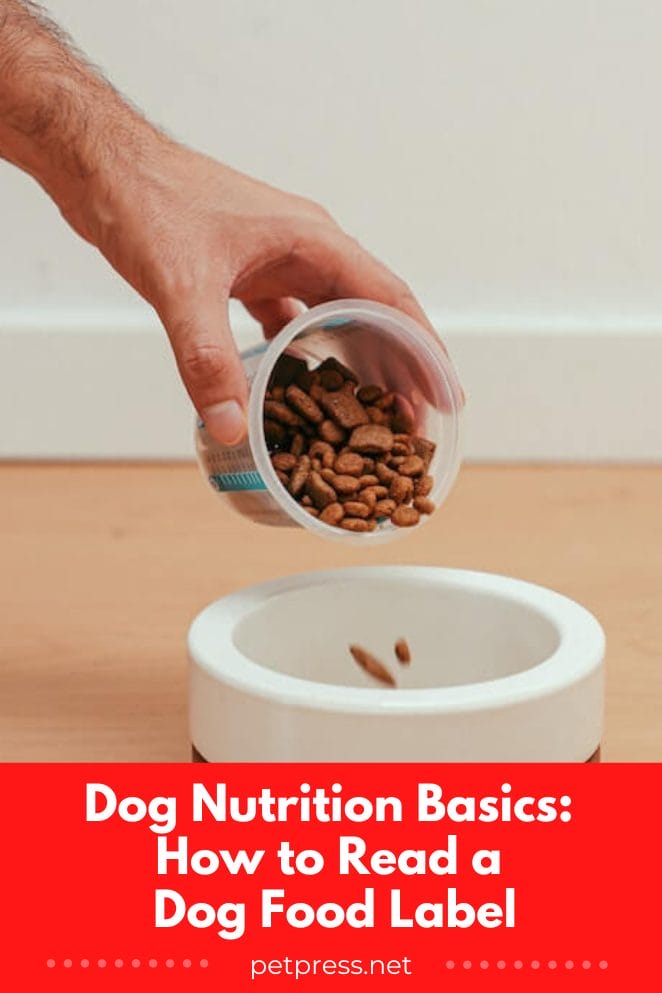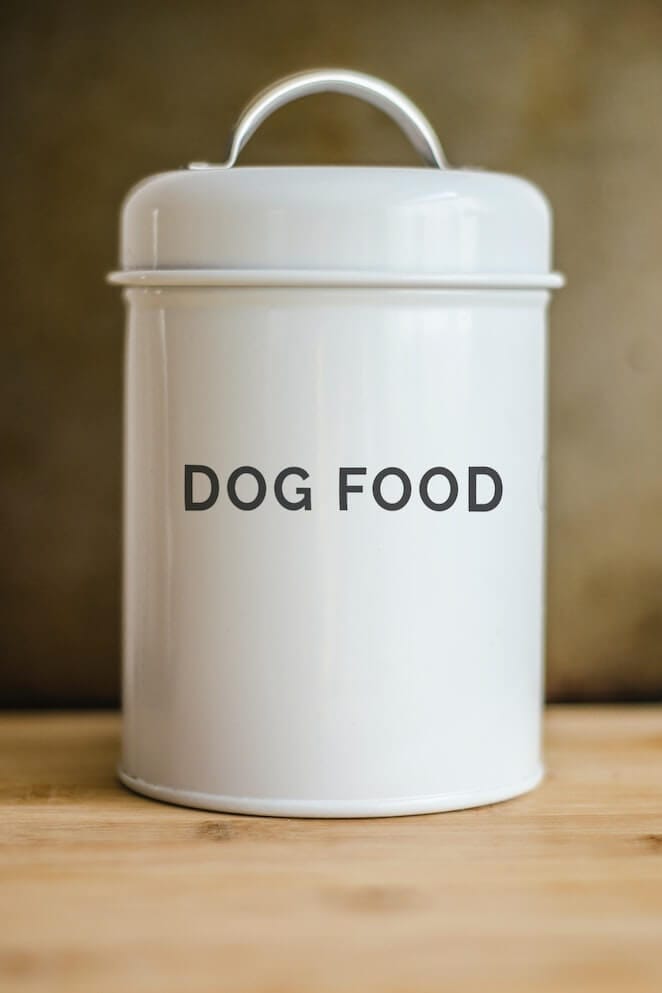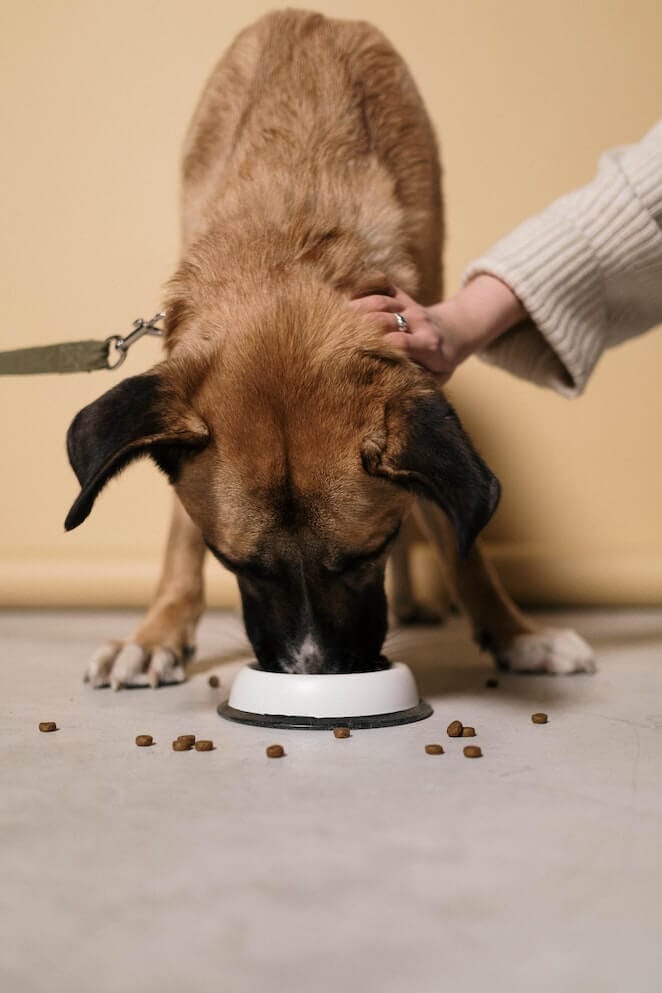
So, you’ve been to the pet store and picked up a bag of your pup’s favorite chow.
You head home with enthusiasm; this is sure to make your pooch happy!
But when you look at the label, it’s like looking at a foreign language – what does any of this mean? That makes you wonder how to read a dog food label.
Don’t worry – with a little help from this guide, reading labels on dog food packs doesn’t have to be so confusing.
How to Read a Dog Food Label

When it comes to buying the right food for your pup, components of a dog food label can give you insight into what’s actually inside the bag.
Ingredients are pretty self-explanatory: they’re the items listed as being in the food. But there’s more to dog food labels than that!
Here’s a quick overview of other useful info you’ll find:
1. Guaranteed Analysis
This required section helps you better understand how much of each nutrient is included in the pet food, whether it is dry kibble or wet cans.
It tells you what percentage (by weight) of proteins and fats, as well as vitamins and minerals, are present in the product.
2. Feeding Guidelines
These guidelines are the manufacturer’s recommendations for how much you should feed your pup each day.
Keep in mind that these amounts may vary depending on age, activity level, and other factors.
3. Nutritional Adequacy Statement
The statement provides assurance that the food meets standards for nutritional adequacy set by AAFCO (the Association of American Feed Control Officials).
It is usually located at the bottom of the label, and states something like “XYZ Dog Food is formulated to meet the nutritional levels established by AAFCO dog food nutrient profiles”.
4. Special Storage Instructions
If a pet food requires special storage instructions such as keeping it refrigerated or sealed tightly, this will be found here.
5. Manufacturer Information
You’ll find who the food was made for, where the product is manufactured and who to contact with questions or concerns about the product.
How Do You Read a Dog’s Feeding Guide?

Now that you know what to look for in a dog food feeding guide, it’s time to start reading!
First of all, always check the label carefully.
Make sure it includes the appropriate information for your specific breed and age group.
Some manufacturers will include different guidelines depending on whether your pup is a puppy or an adult, so keep that in mind.
The guide should provide instructions on how much food you should be giving your pup each day.
It’s important to measure out the exact quantity suggested and not just eyeball it.
If you give your dog more than recommended, they may become overweight.
On the other hand, if you underfeed them, they may suffer from malnutrition and related health problems.
Additionally, you should pay attention to the meal frequency.
Some dogs may do best when they eat two or three small meals a day, while others prefer to have one big meal at night.
Consult your veterinarian to figure out what works best for your pup and their individual needs.
Finally, be sure to take into account any special medical requirements that your dog might have when selecting food.
If they need an allergy-friendly option or something specifically designed for puppies or seniors, make sure that’s clearly listed on the label.
That way you can ensure that you’re providing them with the right nutrition to keep them healthy and happy!
What is The 95% Rule in Dog Food?

The 95% rule in dog food is an important one – it dictates that the product must contain 95% of its main ingredient.
So, for example, if a bag of dog food says “chicken” on the label, then at least 95 percent of what’s inside must be chicken!
That means no fillers or byproducts can make up more than 5 percent of the total weight. This simple rule helps pet parents determine if their pup is getting quality nutrition in their meals.
Remember: when looking for quality pet food, always check to see if the 95% rule applies!
What is The 25% Rule in Dog Food?
The 25% rule in dog food is a simple way to make sure you’re giving your pup the nutrition they need.
Basically, it’s a guideline that suggests one-quarter of your canine companion’s diet should consist of protein.
The other three-quarters should be made up of carbohydrates and fats. This ratio ensures that your pup will get all the energy, vitamins, minerals, and essential fatty acids they need for healthy living.
Nutrition is essential in dogs. This is why few dog parents give food supplements to their dogs in order to keep them healthy.
Of course, some dogs may require more or less protein depending on their age, activity level, and overall health – so speak with your vet before making any dietary changes.
Final Thoughts
So, there you have it – a comprehensive guide to reading dog food labels and understanding what all the ingredients mean.
We hope this guide has been helpful in giving owners better insight into their pup’s diet and nutrition.
During the holiday season, when you wish to feed your dog Christmas foods, then you can check out the label and get the perfect meal with balanced ingredients on it.
In conclusion, don’t forget that when it comes to feeding your furry friend, quality and freshness should always be the primary consideration!
Now that you know how to read a dog food label, start scooping those kibbles! Your pup deserves nothing but the best!
- 7 Dog Breeds With Webbed Feet And Why Do They Have Them - July 19, 2023
- 10 Best Fish For Small Tanks That Make Perfect Pets - July 18, 2023
- How to Breed Guinea Pigs: A Detailed Guide - July 17, 2023


GIPHY App Key not set. Please check settings